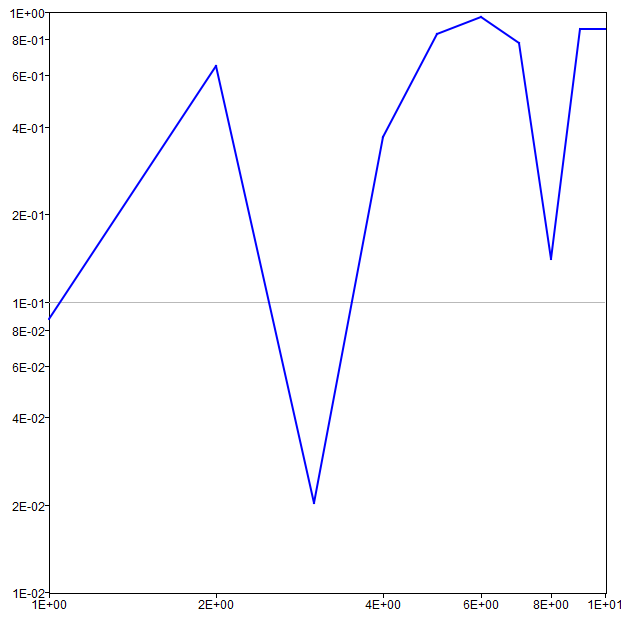loglog
Plots a given dataset in 2D axes with logarithmic scales for x and y axes.
Syntax
h = loglog(y)
h = loglog(x, y)
h = loglog(x, y, x, y, ...)
h = loglog(x, y, fmt)
h = loglog(..., property, value, ...)
h = loglog(hAxes, ...)
Inputs
- x, y
- Range of the x and y axes.
- fmt
- Formatting string for the curve. It can be any combination of the following strings:
- line style: '-', '-.', ':', '--', '-:'.
- line color: 'r', 'g', 'b', 'c', 'y', 'm', 'w', 'b'.
- marker style: 's', 'o', 'd', 'x', 'v', '^', '+', '*', '.'.
- property
- Properties that control the appearance or behavior of the graphics object.
- value
- Value of properties.
- hAxes
- Axis handle.
Outputs
- h
- Handle of the line graphics object.
Example
Simple loglog example:
cla;
loglog(rand(1, 10));
Comments
If x is omitted, the index of y is used as data to
associate with x axis. Loglog takes the optional arguments to control the
line style. It can be either a format string or property/value pair, or both. The form is:
h = loglog([x,] y [, fmt] [, property, value] ...h = loglog(x, y, x, y, ...
h = loglog([x,] y [, fmt] [, property, value], [x,] y [, fmt] [, property, value] ...h = loglog(hAxes, ...